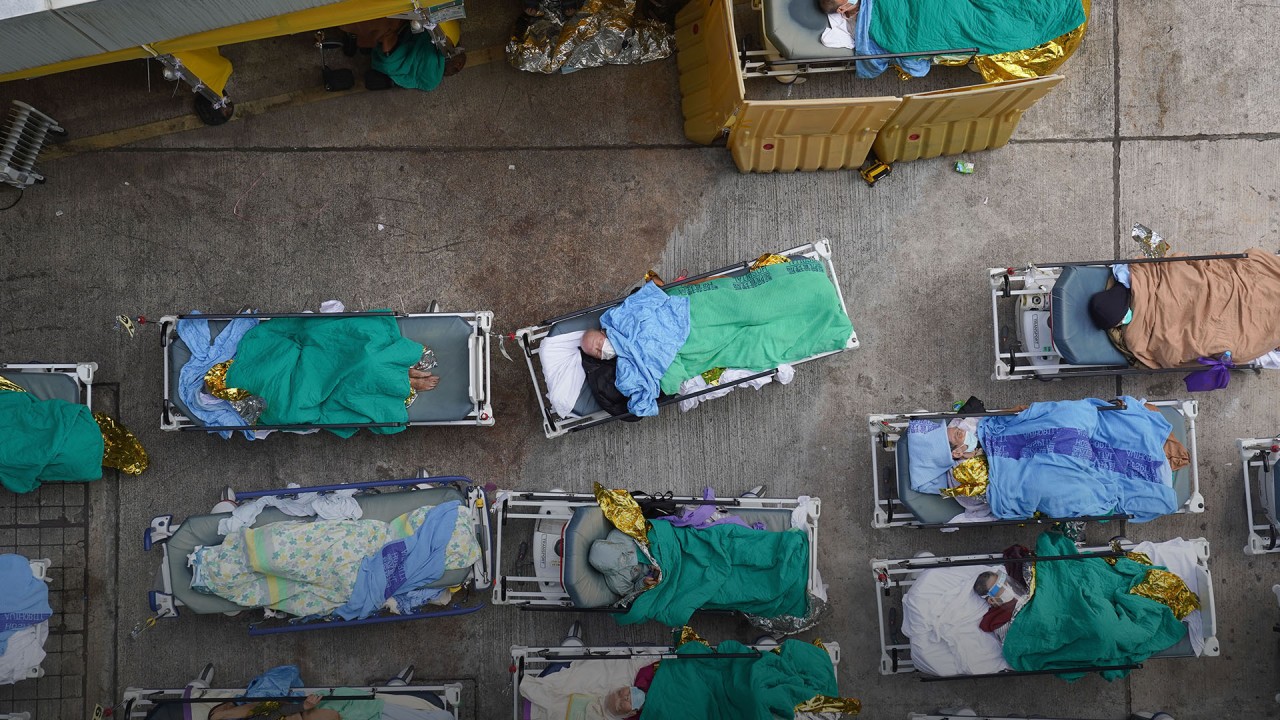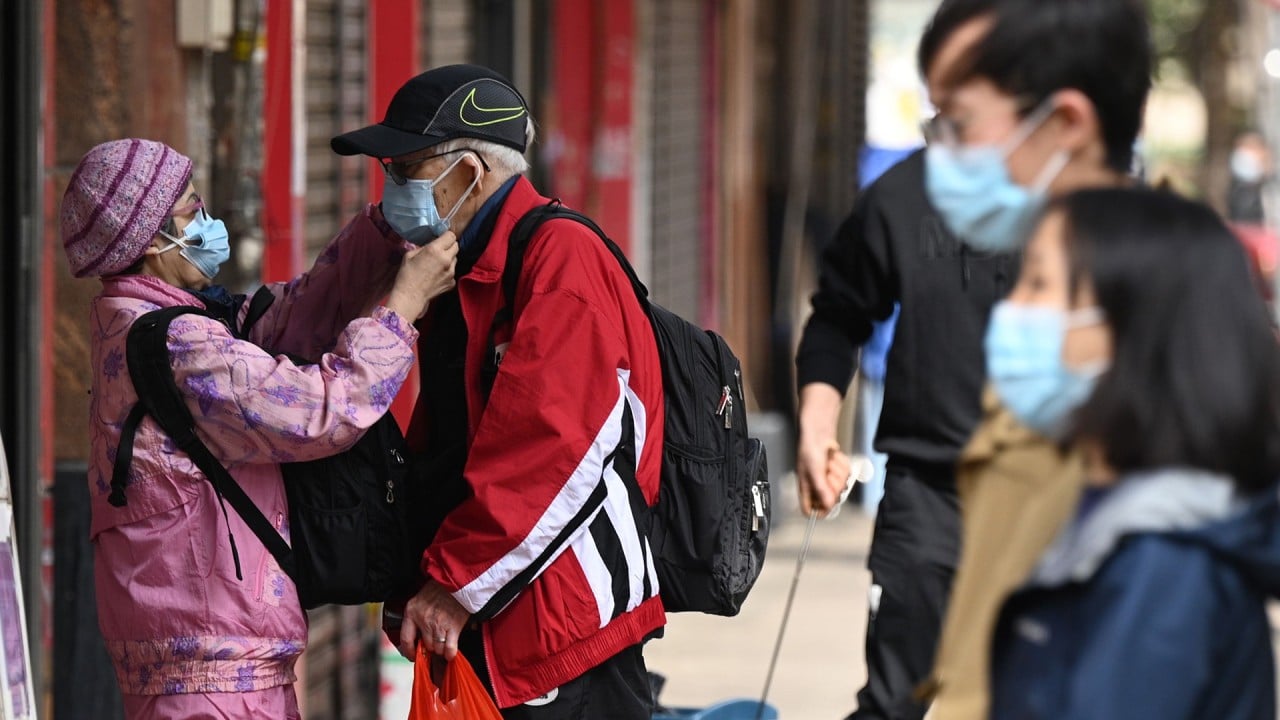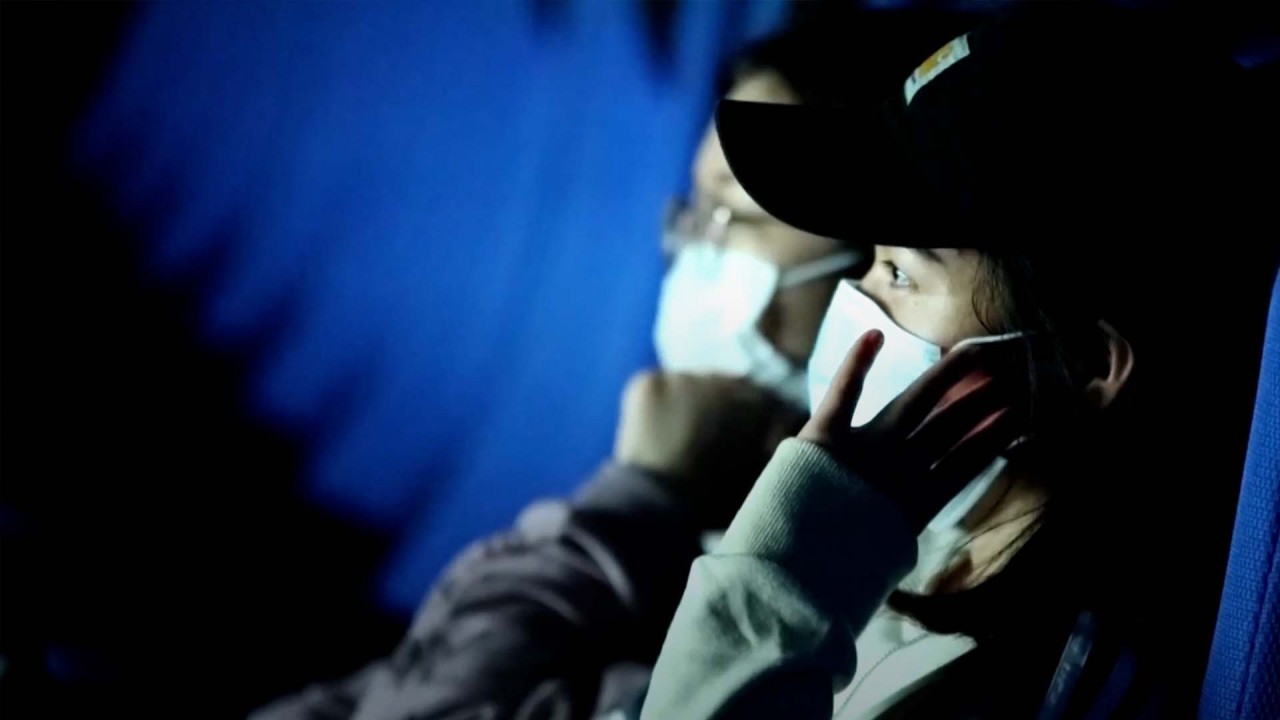
As China eases zero-Covid, fears grow that human toll will remind of Hong Kong’s deadly fifth wave
- Health experts are using Hong Kong data as a model due to similar elderly vaccination situation when spring surge hit
- Low booster rates among older people in a vast population yet to develop hybrid immunity has sparked forecasts of over a million deaths
But while there is joy and relief at the marked shift in curbs, there are also deep concerns.
All eyes are now on how well the country of 1.4 billion manages to “live with the virus”.
Many health experts have used Hong Kong data as a proxy for their forecasts, as the situation in the city about a year ago was very similar to the current status in the Chinese mainland.
Those conditions are now causing worries about the mainland, with the Omicron and its many subvariants spreading quickly and only 40 per cent of those above 80 having received booster shots.
As China’s zero-Covid rules ease, demand surges for rapid tests and medication
Hong Kong data is helping scientists to gauge the protection offered by inactivated vaccines, the kind received by most of the mainland population.
But the data paints a gloomy picture, with models suggesting over a million elderly people could die if a huge Covid-19 wave hits the mainland, overwhelming the health system.
Public experts have called for urgent measures to give booster shots to the elderly and ensure their access to antiviral drugs in case of infection.
Potentially over a million elderly deaths
Airfinity, a British health risk analysis firm, estimates that up to 2.1 million lives will be at risk as China eases its zero-Covid policy, citing the low vaccination and booster rates among the elderly, as well as a lack of hybrid immunity induced by vaccination and previous natural infection.

“If mainland China sees a similar wave to Hong Kong’s in February [2022], its healthcare system could be pushed to capacity, as there could be between 167 and 279 million cases nationwide, which could lead to between 1.3 and 2.1 million deaths,” Airfinity forecast in late November.
The Institute for Health Metrics and Evaluation (IHME) at the University of Washington also expects “a major death toll among the 80-plus population in China” as zero-Covid is eased nationwide.
Cheers, fears and tributes to Wuhan hero Li Wenliang as China marks Covid shift
Both institutes used Hong Kong data as a reference for their forecasts.
“But the basic Hong Kong problem still exists in [mainland] China: you have a substantial fraction of the over-80 population, in almost every province, that is not vaccinated. In the rest of the population, you have a vaccine that has less effectiveness than some of the mRNA vaccines that many other countries have used. And there is not widespread availability at all for antivirals, such as Paxlovid,” IHME said on December 2.
“When it’s unsustainable to continue a zero-Covid strategy, there will be widespread transmission of Omicron, and that will actually have a considerable death toll in the over-80 population,” it forecast.
Covid nasal vaccine co-developed by Hong Kong gets go-ahead in mainland China
An earlier forecast by scientists from Fudan University, based on Chinese vaccination rates in March, estimated that Omicron would cause 1.6 million deaths if Covid restrictions were lifted.
Kwok Kin-on, assistant professor at the Chinese University of Hong Kong’s School of Public Health, said even if the mainland authorities managed to give boosters to the entire elderly population within a short time, a significant number still might die if they contracted Covid-19, even though vaccination would substantially reduce the death rate.
According to Hong Kong data from January to August for people aged 60 and above, the case fatality rate for those who had received three doses of the inactivated vaccine Sinovac was 0.21 per cent, whereas the outcome for recipients of three shots of the BioNTech mRNA vaccine was better, at 0.1 per cent, Kwok said.
“That means even in the best-case scenario, even if China manages to give all its elderly a third shot within a short time, two among 1,000 confirmed cases above 60 years of age could still die,” he warned.
The Chinese public health infrastructure is also expected to come under pressure, just as Hong Kong’s did. Latest official data said China has 10 intensive care unit (ICU) beds per 100,000 people, compared to 7.1 for Hong Kong and nearly 35 in the US.
As of Saturday, Hong Kong had officially recorded more than 2.3 million confirmed cases – and 10,959 deaths – since the start of the pandemic.
Scientists estimated that three-quarters of infections were not reported to the government, Kwok said.
The death rate has dropped significantly in Hong Kong in recent months due to the rising number of elderly vaccinations and the availability of antiviral drugs, as well as hybrid immunity developed in the majority of the population.
‘Astronomical death toll’ price of Hong Kong’s failure to prepare for fifth wave
Dale Fisher, senior consultant for infectious diseases at Singapore’s National University Hospital, and former chair of Global Outbreak Alert and Response Network, said the mainland must brace for surges.
“As restrictions are eased, other countries have realised a surge in transmissions … It’s important that this surge is anticipated so that it does not result in hospitals being overwhelmed,” Fisher said.
“Even vaccinated vulnerable people can die but the risk is about one-tenth that for unvaccinated people. So yes, a large number of infections will result in many deaths.”
Catherine Bennett, inaugural epidemiology chair at Deakin University in Australia, said based on the experience of other countries that eased pandemic restrictions, the first wave after reopening could hit hard.
“Based on every other country that managed to keep Sars-CoV-2 out of the community for the first two years, we do expect high infection rates as the virus first starts to circulate widely in the community,” she said, referring to the official name of the coronavirus that causes Covid-19.
“The transition as people begin to build immunity from both vaccination and infection will have a higher rate of serious illness initially, with most countries showing higher hospitalisation rates in the first wave, with it reducing afterwards.”
A less deadly transition from zero-Covid possible?
“Unfortunately, given the negative impact of the restrictions, there is no choice but to eventually follow this path [of reopening]. The key is to protect the health system so that care can still be given. Individuals need to be vaccinated and boosted as appropriate and use the health system wisely,” Fisher said.

In November, Chinese officials said there were only four ICU beds per 100,000 people in the country. However, the National Health Commission on Friday said that number had been raised to 10 per 100,000 people. No explanation was offered for the rapid rise in capacity.
Moreover, whether people from second or third-tier cities and in rural areas can even access these resources remains a concern for the government.
“The important thing is that the easing is very gradual, perhaps taking six to 12 months before close to normal is realised,” Fisher said.
Some measures such as controlling the size of dine-in groups in restaurants, mask mandates and isolating positive cases should be retained, he added.
“Cases will increase as will hospital presentations and admissions. Almost everyone in the country will become infected, so infections need to be spread out in time so that the peak is not so high.”
Kwok said while retaining certain social distancing measures was necessary, the Hong Kong experience showed that massive outbreaks could still happen.
“Hong Kong did cordon off buildings and people stayed at home. The mobility index at that time was some 40 per cent, meaning mobility had been cut by half.”
But a massive outbreak still occurred, with over 10,000 daily confirmed cases at the peak of the fifth wave.
Therefore, it was also important to specifically target the elderly in terms of preventive methods, Kwok said, including vaccinating care home staff and household members to create a safer setting for aged residents.
The availability of antivirals might also help make China’s transition out of zero-Covid less deadly.
“The wider use of antivirals in 2022 was also associated with reduced death rates, so that might help the transition in China to avoid the same high rate of serious illness,” Bennett at Deakin said.

University of Hong Kong virologist Jin Dongyan also said the availability of antiviral drugs likely puts the mainland in a better position than Hong Kong earlier this year.
“China is in a better position because there is a better road map for the use of Paxlovid … The government should design an effective mechanism of distributing Paxlovid to those who need them.”
As China’s zero-Covid rules ease, demand surges for rapid tests and medication
Pfizer did not reply to an email inquiry about China sales. Paxlovid is the most effective antiviral drug developed so far against Covid-19.
Bennett said the mitigation strategies were meant to buy time for the elderly to get boosted.
“Boosters are not only critical for those vulnerable to severe disease but might also help slow transmission a little in the first stages of community spread, if enough people have had a recent booster.”




